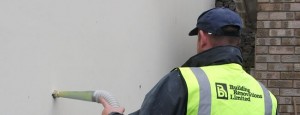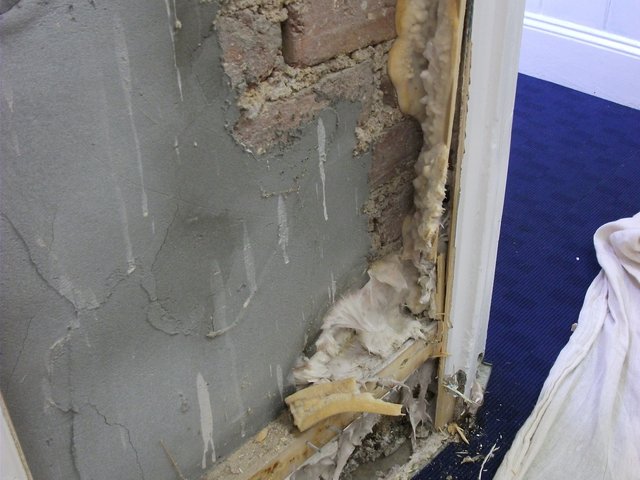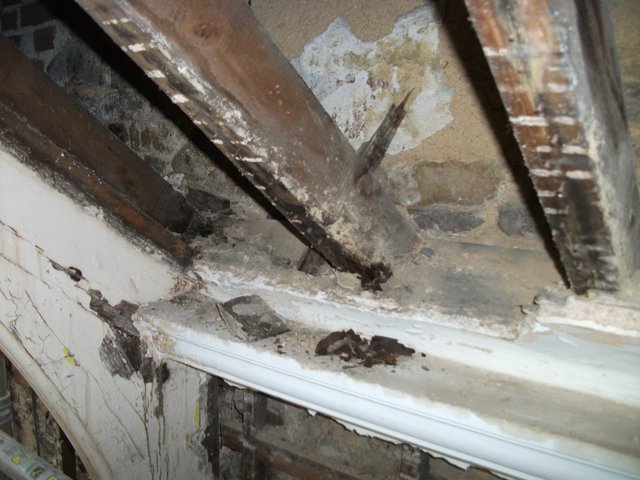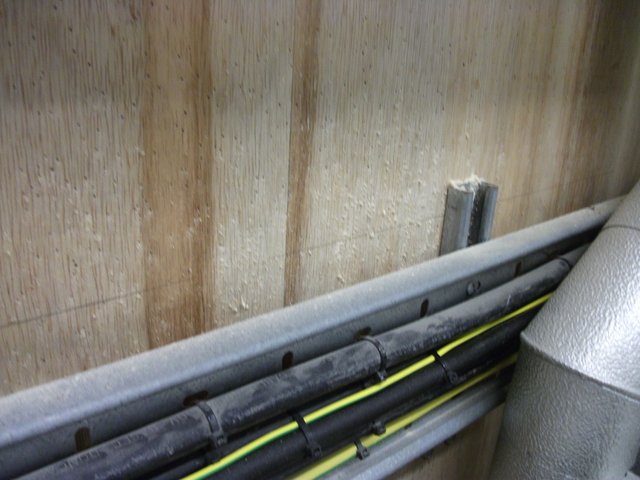Specialist Construction Services
Building Renovations Ltd has been providing specialist treatment and construction services to the Island for over 22 years.
Whether it is water or damp ingress, dry rot, wet rot, or infestation from wood boring insects our surveying team has a wealth of construction problem solving experience and our wide product range can cater for all construction issues irrelevant of size or complexity.
We have a proven track record of delivering projects from conception to handover and would be please to discuss your requirements in greater detail with you.
Environmental Upgrades
We are able to offer a wide range of environmental upgrades from cavity wall insulation to the design and installation of pitched and flat warm roofs.
We are able to review your property and offer guidance on the best ways in which to minimise your impact on the environment whilst offering cost saving on energy consumption.
Dry Rot Treatments
Dry rot (Serpula lacrymans) refers to wood decay caused by certain species of fungi that digests parts of the wood which give the wood strength and stiffness.
Dry rot is the most serious form of fungal decay in a building. It can spread onto and destroy much of the timber in your property.
Timber buried or in contact with wet masonry are at significant risk.1
In buildings, particularly those with solid or of a non cavity construction Dry rot has the ability to travel through building materials other than timber and has been known to travel through and along the wall surface behind plaster and render giving outbreaks the potential to spread quickly through a building. For this reason additional measures (e.g. masonry sterilisation) often have to be taken when treating dry rot outbreaks over and above those necessary when dealing with outbreaks of other wood-rotting fungi.
Dry rot poses a significant risk to timber within a property and any outbreak should be investigated and treated.
Dry rot can cause widespread structural damage. We recommend that any suspected outbreak is inspected as soon as possible.
Building Renovations Ltd has been treating dry rot out breaks across the Islands for over 25 years and has a wealth of experience and guaranteed solutions for the treatment and eradication of dry rot.
Wet Rot Treatments
Wet rot (Coniophora Puteana) is the most common form of timber decay and can be found in most properties at some point and is typically confined to the area where buried and exposed timber has become and remains wet.
Firstly the cause of the water ingress should be identified and any structural problems should be treated. There is no point in repairing the damage to the timber if it is going to reappear because the cause has not been identified and treated.
If an outbreak of wet rot occurs in structural timbers (such as roof trusses, floor joists the implication for structural integrity must be established. In other areas, the rotten timbers should be removed and replaced; if the damaged area is fairly small, it can be cut away and a new piece of timber joined to that remaining.
If the damage is confined to a very small area, an epoxy based repair kit can be used to fill the damaged area once it has been cut back to sound timber and the new surface of the wood treated with a suitable primer. Preservative tablets are available which are inserted into the timber adjacent to the repaired area to protect the timber ‘from within’.
If there is any doubt that the structural problem has been eliminated, the new and adjoining timber should be treated with a proprietary wet rot treatment before redecorating. After repair exposed timbers should be treated to reduce the potential for ongoing issues.
External timbers should be protected with adequate coats of paint or some other suitable timber treatment/preservative.
Insect Attack
Most Building Surveyors reports on homes built before 1990 make mention to woodworm attack and treatment. Woodworm is a common collective name of wood boring insects.
Insect attacks to timber come in many forms and from many insect types. The most common insect attacks in the Island are from the Common Furniture beetle (Anobium punctatum) and the Deathwatch beetle (Xestobium rufovillosum).
All untreated timber exposed to the correct atmosphere can attract insect attack and the effects of this can vary from small worm holes to major structural failure.
Building Renovations Ltd has been treating insect attack to timber across the Islands for over 25 years and has a wealth of experience and solutions for the treatment and eradication of dry rot.
Condensation Control
It is a well known fact that some houses and flats suffer from condensation. Walls, ceilings and sometimes floors become damp and discoloured and can become permanently damaged.
Often unpleasant smells arise as a result of mould growth on surfaces and personal possessions.
Why Condensation Occurs
Condensation occurs when warm moist air meets a cold surface. The risk of condensation therefore depends upon how moist the air is and how cold the surfaces of the rooms are.
Both of these depend to some extent on how the building was constructed and how it is used.
When Condensation Occurs
Condensation usually occurs on external walls and in close proximity to windows in winter because the building structure is cold and because windows are opened less and moist air , which we all breath out, cannot escape.
Where Condensation Occurs
Condensation which you can see occurs often for short periods in bathroom and kitchens because of the steamy atmosphere and quite frequently for long periods in unheated rooms, it is also noted in cupboards or corners of the rooms which have limited or no ventilation flow or the ventilation and movement of air are restricted. Besides condensation on visible surfaces, damage can occur to materials, which are out of sight.
What is Important
Three things are particularly important.
- To prevent moist air spreading to other rooms from kitchens and bathrooms or from where clothes may be put to dry;
- To provide some ventilation to all rooms so that moist air can escape;
- To use heat reasonably.
The following notes give advice on how you can help to prevent serious condensation in your home.
Removal of Airborne Moisture Content from Rooms
Good ventilation of kitchens when washing or drying clothes or cooking is undertaken is essential. If there is an electric extractor fan, it should always be used when cooking or drying clothes and particularly whenever the windows show any sign of misting. Leave the fan on until the misting has cleared completely;
If there is not an extractor fan, open kitchen windows but keep doors closed as much as possible;
After bathing keep the bathroom window open and shut the door for long enough to dry off the room;
In other rooms, provide some ventilation.
In older houses, a lot of ventilation occurs through fireplaces flues and draughty windows. In modern flats and houses, sufficient ventilation does not occur unless a window or ventilator is open for a reasonable time each day and for nearly all the time the room is in use.
We are aware that too much ventilation in cold weather is uncomfortable and wastes heat but we would recommend that windows are left open slightly when ever possible.
Avoid the use of portable paraffin or flue-less gas heaters as these will significantly increase the moisture levels. Each litre of oil or gas used produces the equivalent of about a litre of liquid water in the form of water vapour. If these heaters must be used, make sure the room they are in is well ventilated;
If condensation occurs in a room which has a heating appliance with a flue the heating installation should be checked as the condensation may have appeared because the appliance has become partially blocked;
The drying of cloths on internal lines is not recommended as this releases significant moisture into the air;
Do not use place damp or recently tumble dried clothes in wardrobes or airing cupboards;
If washing must be put to dry inside your home, for example in a bathroom or kitchen, open a window or turn on the extractor fan, enough to ventilate the room. Do not leave the door open or moist air will spread to other rooms where it may cause condensation issues.
Provide Reasonable Heating
Try to make sure all rooms are at least partially heated. Condensation often occurs in unheated rooms such as bathrooms and bedrooms;
To prevent condensation the heat has to keep room surfaces reasonably warm. It takes a long time for a cold building structure to warm up so it is better to have a small amount of heat for a long period rather than a lot of heat for a short period;
Consider the options for introducing cavity wall insulation to increase the surface temperature of the rooms;
Houses and flats left unoccupied and unheated during the day get very cold. Whenever possible, it is best to keep heating on, even at low level;
In houses, the rooms above a heated room benefit to some extent from heat rising through the floor. In bungalows and in most flats this does not happen. Some rooms are especially cold because they have a lot of outside walls to lose heat through and in many cases a roof as well. Such rooms are most likely to have condensation and some heating is therefore necessary. Even in a well-insulated house and with reasonable ventilation it is likely to be necessary during cold weather to maintain all rooms at not less than 14 degrees in order to avoid condensation. When living rooms are in use temperature should be raised to around 20 degrees.
Mould Growth
Any sign of mould growth is an indication of the presence of moisture and can generally be attributed to condensation. This mould growth gives warning that heating, structural insulation or ventilation, or all three may require improvement.
New Buildings
New buildings often take a long time before they are fully dried out. While this is happening they need extra heat and ventilation. At least during the first winter of use many houses and flats require more heat than they will need in subsequent winters. Allowance should be made for this. It is important that wet construction should be free to dry out. In some forms of construction, especially flat roofs of concrete, final drying may only be able to take place inwards. Ceiling finishes, which would prevent such drying out, should not be added unless advice has been given that this would not be detrimental.
Effect of Increased Ventilation on Fuel Burning Appliances.
If an occupier proposes to install an extractor fan or otherwise change the ventilation in the room containing a gas or solid fuel appliance, he should obtain advice from the installer of the appliance about the risks from toxic fumes.
Manual and forced solutions.
Various options are available for the management and control of condensation and the damage caused by condensation.
Whatever your construction need…
Building Renovations have the solution!
Expertise & Training
Reputation
Recognised as the Islands premier providers of specialist treatments and construction services to domestic and commercial property owners and the construction industry.
30 Years Experience
Our management team has a wealth of general and specific construction experience and qualifications ranging from BSc (Hons) qualified surveyors to IICRC accredited technicians who are able and willing to assist you wherever possible.
REQUEST A CALLBACK
Are you looking for construction services?
Fill out this form and we will call you back.
PHONE
OFFICE HOURS
COVID-19 Update: Our offices are now
open between 8.30am – 5pm




